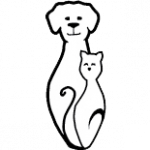Illustrated Articles
-
Homeopathy is a distinct philosophy of medicine that has its roots in eighteenth-century Germany, and subsequently spread to Europe, India, Australia, South America, the United States, and Canada. The underlying basis of homeopathy is the principle that "like cures like": the idea that a substance given at a toxic dose can produce a certain set of symptoms, but given in much lower doses, it can cure the same set of symptoms, regardless of their perceived cause. As veterinary homeopathy gains acceptance, there are an increasing number of veterinarians in private practice who possess the necessary training and experience.
-
As a form of rehabilitation, massage therapy is the application of specific hand movements on a patient to improve muscle and joint function by relieving tension, spasm, or other restrictions to proper motion.
-
Combining alternative medical therapies, either with other alternative therapies or with more conventional treatments, may improve a patient's health or speed the healing of disease. However, combined incorrectly, these same therapies have the potential to interfere with healing or cause serious health consequences. Veterinary practitioners trained in acupuncture, herbal therapy, and homeopathy are the best sources of information on what conventional and alternative treatments will combine well and which ones should not be used together.
-
Wei Ling Tang is the premier general cat maintenance formula, partly because of its bland taste but also because it adresses the main Chinese medical diagnosis found in cats: Spleen Qi deficiency with secondary Dampness acumulation. Certain dog breeds also benefit including Yorkies. COmmon signs and symptoms of Dampness include weight gains, ascites, and a greasy or clumpy hair coat with dander. Common symptoms of Spleen deficiency include chronic vomiting, chiliness, weakness, sleepiness, poor appetite, or loose stools. Where dampness is obtructing the normal descent of Stomach Qi, bloating and vomiting of mucus or fresh food may result. Disease indications for WLT include colitis, glomerulonephritis, low grade hepatitis, cirrhosis, pancreatitis, IBD and the early stages of hyperthyroidism. This formula provides indirect support of Liver Blood and Kidney Essence through its tonifying actions on the Spleen. It is safe for long tern use however should be avoided in "hot" animals.
-
Xian Fang Huo Ming Yin was origianlly used as an anti-microbial formula, as well as for the treatment of hemorrhagic disorders associated with Heat symptoms. Its common use however, is for the treatment of chronic lameness and arthritis in dogs that are often hot, overweight, prone to skin growths, adn worse in damp weather. The arthritis is worse with rest or over-exercise, improved wit light exercise, and a history of surgery or trauma. The formula has shown promise in the treatment and prevention of mammary tumors and tumors of the limbs, including melanoma. Adverse effects are not reported
-
This is one of the most important formulas in the history of Herbal medicine. It was devised to treat relatively deep seated pathogens. (eg Lymes disease, blood parasites). It is of benefit in immune mediated ocnditions such as anemia, Thrombocytopenia (platelet disorder) and Lupus. In addition to expelling pathogens, it also ensures the smooth flow of Qi along the Triple Burner and out to the extremities. Obstruction of these channels can produce vomiting, eructatiobn (bleching) , urinary incontinence, shortness of breath, chronic dry cough, weakness, restlessness, loss of balance to complete collapse. Enhancing the smooth flow of Qi in the Gall BLadder channel is crucial for the normal function of structures such as the hips and knees. Disorders benfiting from opening of the conduits include cruciate ligament damage, flank pain, hindlimb paralysis, adn hip dysplasia.
-
Xiao Huo Luo Dan is traditionally used as a Blood mover to adress severe persistent pain, whether chronic or acute. It warms the channels to quicken their Blood flow. It is designed to be used short term ( ie not months).
-
Xiao Yao San is designed to adress disharmonies between the Liver and Spleen. In health, the SPleen supplies the Liver with sufficient stores of Blood to allow it to do its job of Qi flow. When the Liver is deprived of Blood , Qi stagnates. Digestion (Spleen Qi) subsequently becomes impaired leading to loose stools, reduced appetite, chronic weight loss, weak pulses, and undigested food in stool. Formulas often tend to help particular breeds - XYS is commonly beneficial to Yorkshire Terriers. Adverse effects are not reported.
-
Xue Fu Zhu Yu Tang (XFZYT) is onr of the most commonly used herbal formulas in veterinary herbal medicine. It adresses Qi & BLood stasis, as well as an underlying BLood deficiency. It is particualrly efffective in the Upper/Outer parts of the body, including head, chest, and skin. Symptoms of stasis include chronic/resonant cough, diffuclty bereathing, lavender tongue, thin tense pulse , cool ears & paws. Signs of Blood deficiency commonly include territoriality, timidity, small dander, recurrent mild skin infections, dry eye, frequent dreaming, noise sensitivity, mild liver enzyme increase in blodwork, andxiety.
-
Yi Guan Jian (YGJ) is very commonly used as a Liver Blood and Kidney Yin tonic. Blood deficiency is indicated by thin skin, low grade superficial pyoderma, mild-moderate liver enzyme elevations, small liver on xray, timidity, eye dryness, territoriality. Yin deficiency symptoms include eye/face/ear redness, heat intolerance, chronic weight loss (good appetite), increased thirst. A strong indicator for YGJ is a pale-edged tongue with levender center.

